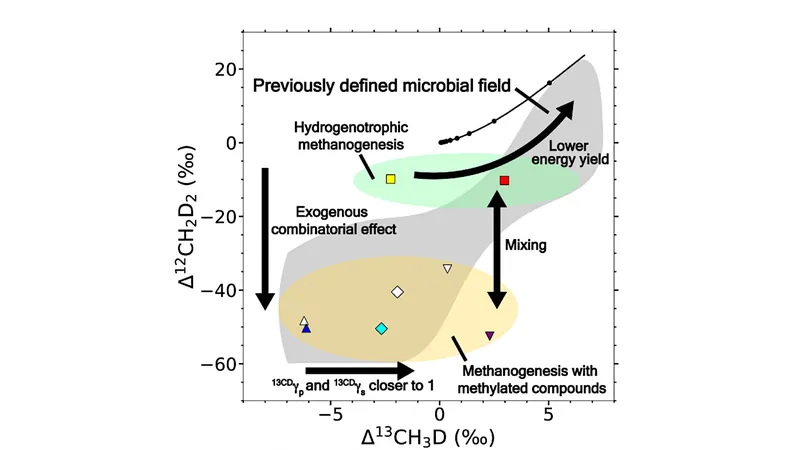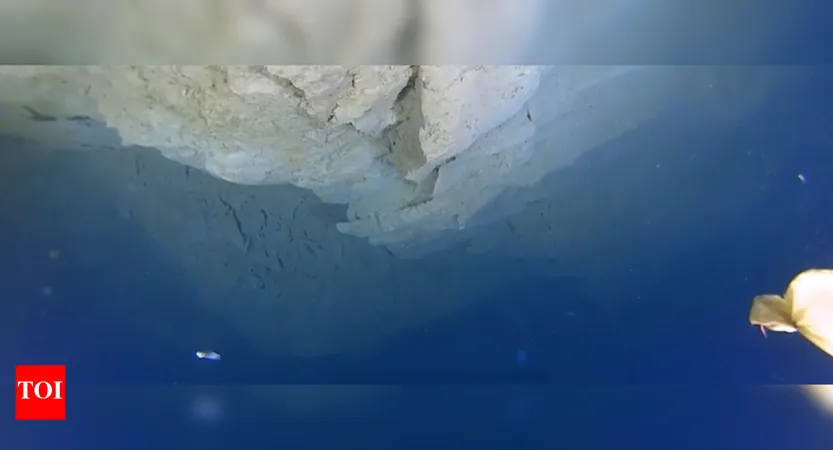
Unlocking the Secrets of Methane: The Surprising Science of Clumped Isotopes
2025-07-28
Author: Jacques
The Methane Mystery Unveiled
Methane, a potent greenhouse gas, plays a critical role not only as an energy source but also within the global carbon cycle. But did you know that the subtle variations in its isotopes can unravel the mysteries surrounding its origins? Enter the world of clumped isotopologues—specifically, the fascinating duo of 13CH3D and 12CH2D2.
A Deep Dive into Methanogenic Pathways
Despite methane's significance, the isotopic signatures from various microbial pathways of methane production have gone relatively unexplored—until now! Recent research has finally mapped out the clumped isotope signatures associated with hydrogenotrophic, methylotrophic, acetoclastic, and methoxydotrophic methanogenesis. This groundbreaking study enables scientists to distinguish between the different microbial sources of this greenhouse gas.
Discoveries that Matter
By analyzing the distinctive 12CH2D2 compositions, researchers uncovered a striking 'combinatorial effect' that differentiates hydrogenotrophic methanogenesis from its counterparts. Meanwhile, shifts in fractionation factors brought to light the variances in 13CH3D compositions among the methylotrophic, acetoclastic, and methoxydotrophic pathways. These insights are vital for our understanding of methane cycling and greenhouse gas dynamics.
Energy and Isotopes: A Surprising Link
But there's more! The way different microbial strains generate energy during methanogenesis also impacts methane's isotope values. This revelation opens up new avenues for understanding how living organisms contribute to global methane emission patterns. Interestingly, the study suggests that the varied isotopic signatures observed in freshwater environments could stem from a mixing of hydrogenotrophic and other methanogenic processes.
Implications for Environmental Science
This comprehensive study not only presents new experimental data on the isotope signatures of distinct microbial pathways but also sheds light on the mechanisms behind the observed variations. Such knowledge is crucial for enhancing our understanding of methane sources and sinks, ultimately informing strategies aimed at mitigating climate change.
Join the Conversation!
As we uncover more about the intricate world of methane and its isotopes, the implications stretch far beyond the lab. They reach into every corner of environmental science, policy-making, and our daily lives. Stay tuned for more revelations in this captivating field!









 Brasil (PT)
Brasil (PT)
 Canada (EN)
Canada (EN)
 Chile (ES)
Chile (ES)
 Česko (CS)
Česko (CS)
 대한민국 (KO)
대한민국 (KO)
 España (ES)
España (ES)
 France (FR)
France (FR)
 Hong Kong (EN)
Hong Kong (EN)
 Italia (IT)
Italia (IT)
 日本 (JA)
日本 (JA)
 Magyarország (HU)
Magyarország (HU)
 Norge (NO)
Norge (NO)
 Polska (PL)
Polska (PL)
 Schweiz (DE)
Schweiz (DE)
 Singapore (EN)
Singapore (EN)
 Sverige (SV)
Sverige (SV)
 Suomi (FI)
Suomi (FI)
 Türkiye (TR)
Türkiye (TR)
 الإمارات العربية المتحدة (AR)
الإمارات العربية المتحدة (AR)